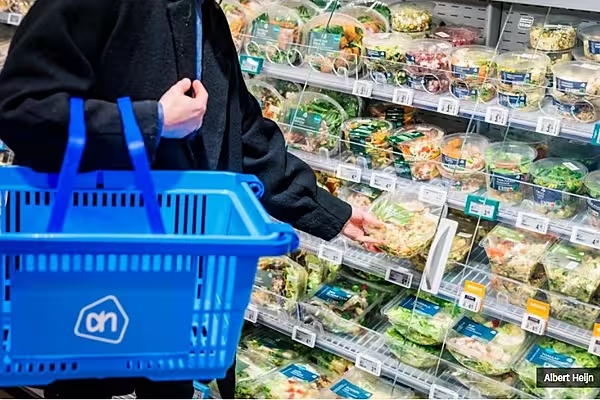Dave Lewis is warming up Tesco's second act. It could be a hit.
The Chief Executive has seen Britain's biggest grocer through a 263 million pound ($335 million) profit overstatement in 2014, the darkest period in its nearly 100-year history. The debacle cost the company its investment-grade credit rating and led to billions of pounds of one-off losses.
But the turnaround so far has been led by an increase in the volume of sales. Profit is still a very long way from the heady heights achieved five years ago, when group pre-tax profit was over 3 billion pounds and the U.K. operating margin topped 6 percent. While profit might never get back to this level, investors need to see proof that some of the sales growth is falling through to the bottom line.
That may change on Wednesday. Lewis may announce plans to accelerate profit expansion, alongside a report of a third consecutive quarter of same-store sales growth, and a useful near-doubling of the U.K. operating margin.
That would be the much-needed next step to its recovery, but to keep investors on board, Lewis needs to show he can manage the balancing act required to keep Tesco on the right path.
There's one obvious option: expanding cost cuts beyond existing plans to save 250 million pounds a year. That might be necessary for more sales to fall through to the bottom line while sustaining a strategy of cutting prices.
But that also brings perils. Tesco's stumbled in this area before -- problems in the past came from stripping out too much cost, leaving stores dirty and inadequate staff to serve customers. Making the environment a better place to shop has been a cornerstone of Lewis's strategy alongside price cuts, and the same-store sales growth shows that's been working. Jeopardizing that combination would be risky.
Lower rental costs would also help boost profit, so Lewis could look to buy back more stores from landlords to ease its overhead costs, which would be sensible.
The problem for Lewis is that he'll have to drive any new strategy in a fiercely competitive environment.
The German discounters, Aldi and Lidl, remain a potent threat. True, their sales growth might be slowing -- thanks in part to the success of Lewis's price cuts on fresh food. But they continue to open stores apace.
What's more, the floundering over at Asda, Britain's third-biggest supermarket, could turn out to be a blip. If Asda turns around its miserable sales decline under new chief executive Sean Clarke, the sick grocer of Britain would suddenly turn into a vigorous competitor. And the rest of the industry -- including Tesco -- will lose an opportunity to boost their own sales by picking off Asda's disgruntled customers.
Shares in Tesco have risen 24 percent this year, as the lower prices have struck a chord with shoppers. They trade on a forward price earnings ratio of 22 times, ahead of Morrison and Sainsbury.
For that valuation to be justified profit will have to improve along with sales. Juicing volumes will no longer be enough. Otherwise, investors could well give up their seats at the intermission.
This column does not necessarily reflect the opinion of Bloomberg LP and its owners.
News by Bloomberg, edited by ESM. To subscribe to ESM: The European Supermarket Magazine, click here.














